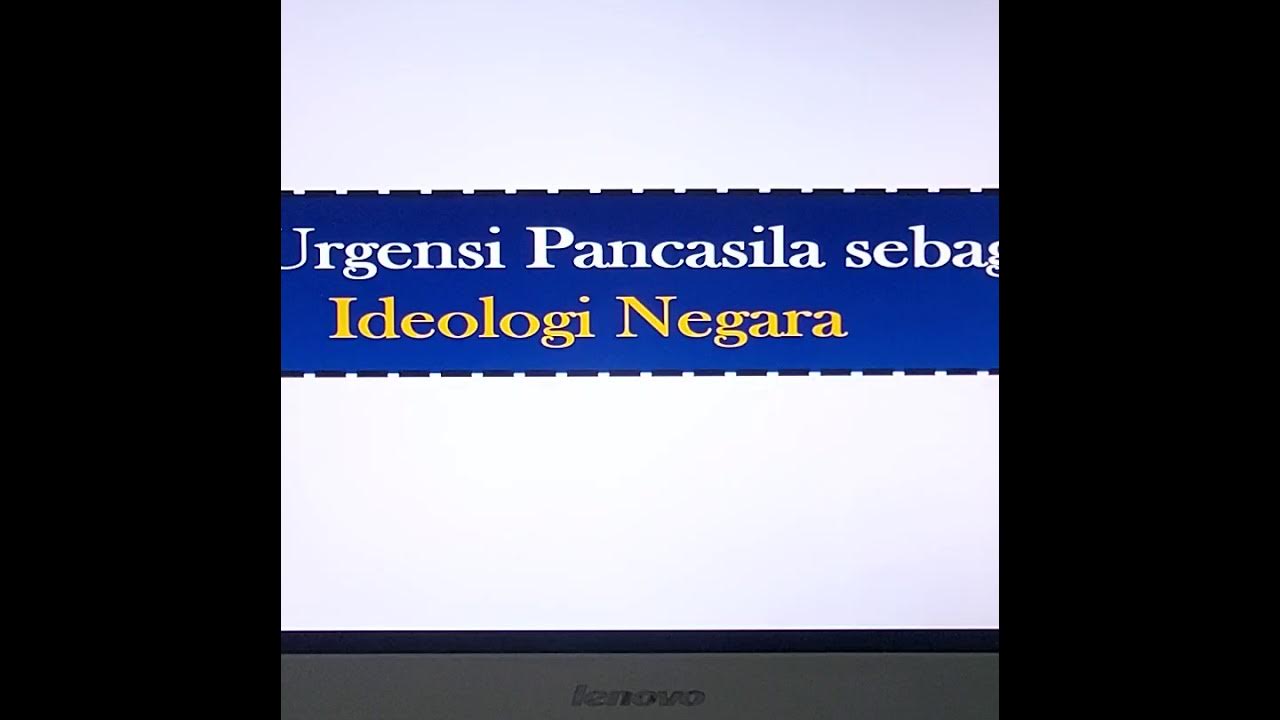BAB 1 PANCASILA KELAS XI SMA /MA KURIKULUM MERDEKA
Summary
TLDRThis video explores the concept of Pancasila as an open ideology in Indonesia, detailing its three key aspects: reality, ideality, and flexibility. It highlights how Pancasila is a guiding principle in various fields such as law, economics, socio-culture, and defense. The video also discusses its embodiment in Indonesian state institutions and the democratic processes based on deliberation and consensus. Emphasizing values such as equality, justice, and social welfare, the video demonstrates how Pancasila shapes national identity and governance, ensuring the nation's growth while respecting cultural diversity and democracy.
Takeaways
- 😀 Pancasila, as Indonesia's national ideology, has three key aspects: reality, ideality, and flexibility.
- 😀 The reality aspect of Pancasila reflects societal values and developments.
- 😀 The ideality aspect of Pancasila inspires motivation and action towards a better future, beyond theoretical concepts.
- 😀 The flexibility aspect ensures Pancasila remains relevant by adapting to the changing societal context.
- 😀 Pancasila is made up of three types of values: basic values (absolute principles), instrumental values (social and legal norms), and practical values (values implemented in real life).
- 😀 The ideality dimension of Pancasila involves systematic, rational, and comprehensive principles.
- 😀 The normative dimension of Pancasila reflects state norms that operationalize its values.
- 😀 The reality dimension ensures that Pancasila aligns with the actual conditions and practices of society.
- 😀 Pancasila prohibits the development of extreme ideologies, such as Marxism and Communism, and emphasizes consensus in lawmaking.
- 😀 The embodiment of Pancasila is seen in various sectors like law, economy, socio-culture, and defense, where its values are applied in real-world practices.
- 😀 Indonesian state institutions such as the MPR, DPR, President, Supreme Court, and others reflect Pancasila values and operate under its influence.
Q & A
What are the three aspects of Pancasila as an open ideology?
-The three aspects of Pancasila as an open ideology are the reality aspect, the ideality aspect, and the flexibility aspect. The reality aspect reflects values that grow in society, the ideality aspect fosters motivation to realize those values, and the flexibility aspect ensures Pancasila remains relevant and functional.
How does the ideality aspect of Pancasila function?
-The ideality aspect of Pancasila fosters motivation and passion among its supporters, ensuring that the values contained within it are not merely Utopian but are achievable in reality.
What is the significance of the flexibility aspect of Pancasila?
-The flexibility aspect ensures that Pancasila remains adaptable and open to the development of new ideological values, ensuring its relevance and functionality in changing societal contexts.
What are the three types of values within Pancasila?
-The three types of values within Pancasila are basic values (absolute principles), instrumental values (social and legal norms), and practical values (values applied in reality, serving as a touchstone for the other two).
How do the basic values of Pancasila function in society?
-The basic values of Pancasila represent absolute principles that are considered true or unquestionable. These serve as the foundation for the ideology and guide the society in upholding these principles.
What role do instrumental values play in Pancasila?
-Instrumental values are reflected in social norms and legal norms, which become crystallized into state regulations and institutional mechanisms, playing a key role in shaping the operational framework of the nation.
How are practical values different from basic and instrumental values in Pancasila?
-Practical values are the actual implementation of Pancasila's principles in daily life. They act as a test to determine if basic and instrumental values are truly alive and operational in society.
What are the three dimensions of Pancasila as an ideology?
-The three dimensions of Pancasila are the ideality dimension (systematic, rational, and comprehensive values), the normative dimension (operationalized system of state norms), and the reality dimension (reflection of societal realities).
What are some limitations of Pancasila ideology?
-Some limitations of Pancasila include the need for dynamic national stability, prohibition of Marxism, Leninism, and communism, as well as restrictions on extreme ideologies that could disrupt society's life. New norms must be developed through consensus.
How is Pancasila realized in the fields of law, economics, and society?
-In the law field, Pancasila promotes fairness and justice, ensuring legal processes are based on humanitarian principles. In economics, it advocates for economic democracy, joint efforts, and control over national resources. Socio-culturally, it respects diversity and promotes equality.
Outlines

Этот раздел доступен только подписчикам платных тарифов. Пожалуйста, перейдите на платный тариф для доступа.
Перейти на платный тарифMindmap

Этот раздел доступен только подписчикам платных тарифов. Пожалуйста, перейдите на платный тариф для доступа.
Перейти на платный тарифKeywords

Этот раздел доступен только подписчикам платных тарифов. Пожалуйста, перейдите на платный тариф для доступа.
Перейти на платный тарифHighlights

Этот раздел доступен только подписчикам платных тарифов. Пожалуйста, перейдите на платный тариф для доступа.
Перейти на платный тарифTranscripts

Этот раздел доступен только подписчикам платных тарифов. Пожалуйста, перейдите на платный тариф для доступа.
Перейти на платный тарифПосмотреть больше похожих видео

Pancasila Sebagai Ideologi Nasional [3]

Pancasila dan ideologi Dunia

RANGKUMAN MATERI PPKN KELAS 8 SMP/MTS BAB 1 PANCASILA DALAM KEHIDUPAN BANGSA INDONESIA (CP TERBARU)

Rangkuman Materi PKN Kelas 9 Bab 1|Dinamika Perwujudan Pancasila Sebagai Pandangan Hidup Bangsa

Kenapa Pancasila disebut Sebagai Ideologi Terbuka? - Fakta Menarik

Pancasila sebagai Ideologi Negara
5.0 / 5 (0 votes)
